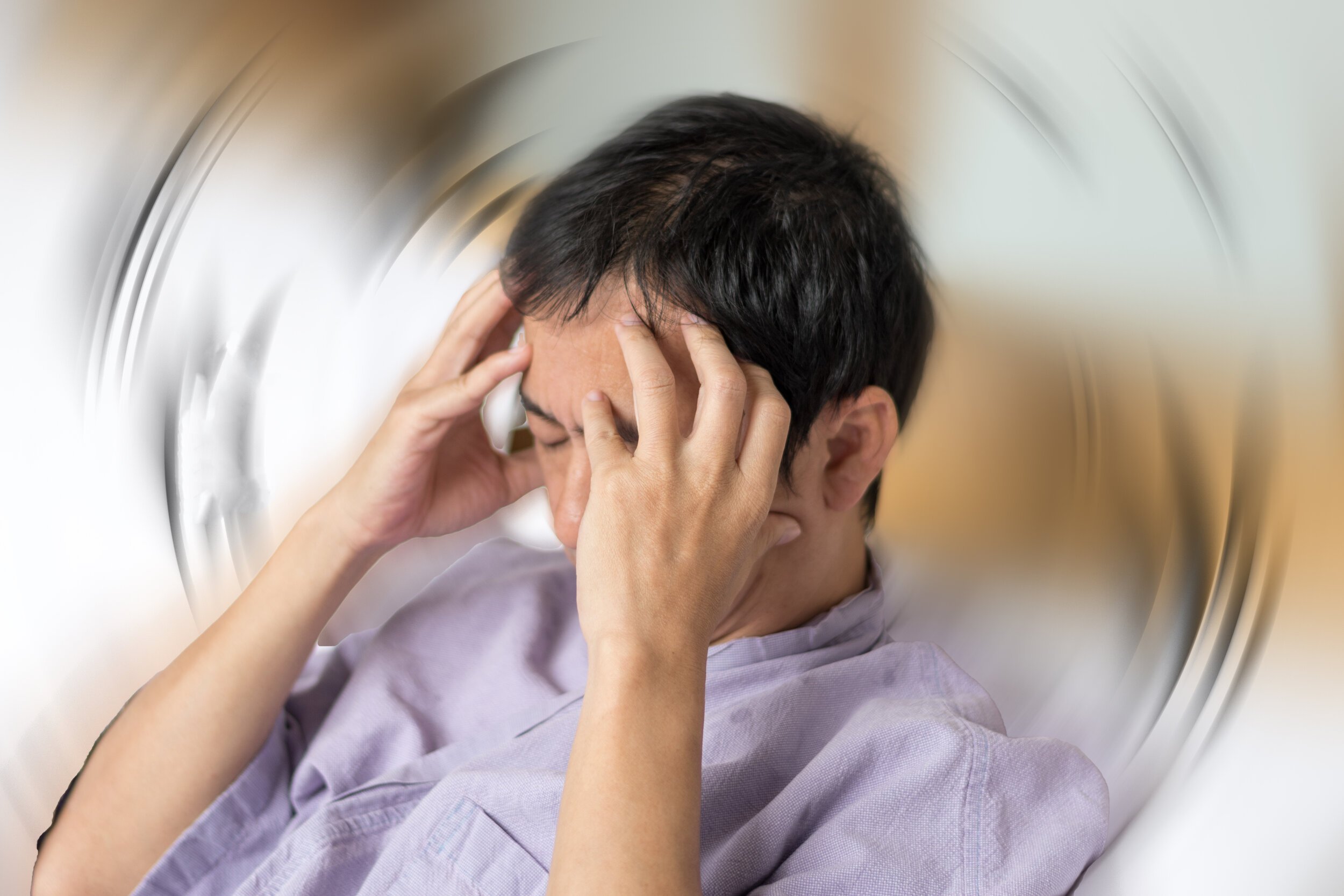
Vestibular (Dizziness) Rehabilitation
Vestibular (Dizziness) Rehabilitation
Vestibular rehabilitation is a specialized form of physical therapy designed to address issues related to balance, vertigo, and dizziness that arise from problems in the vestibular system. The vestibular system is responsible for maintaining spatial orientation, coordinating eye movements, and providing a sense of balance.
The most common cause of vertigo is is called Benign Paroxysmal Position Vertigo (BPPV). BPPV occurs when crystals (called otoconia) which are normally located in one part of the inner ear, become dislodged and collect in another part of the inner ear. As your head moves, the dislodged crystals also move and incorrect messages are sent to your brain. The brain receives messages that the head is moving, causing an illusion of movement of spinning as the crystals brush over the movement sensors in the ear. This can occur with simple movements such as rolling over in bed or looking up. BPPV is successfully treated using a range of positional manoeuvres that aim to move the crystals out of the semi-circular canal of the inner ear to an area that will not stimulate the wrong messages to the brain.
Here are key points regarding vestibular rehabilitation:
Symptoms Treated: Vestibular rehabilitation is particularly beneficial for individuals experiencing symptoms such as vertigo (a sensation of spinning), dizziness, nausea, motion sensitivity, light sensitivity, noise sensitivity, blurry vision, double vision, imbalance, and hearing changes. These symptoms often stem from disorders or dysfunction in the vestibular system.
Manual Techniques: Therapists may use manual techniques to address specific issues related to the vestibular system. These techniques may involve head movements to maneuver crystals in the inner ear, or head and body movements to promote adaptation and improve vestibular function.
Exercises: Balance, vision, and coordination exercises play a crucial role in vestibular rehabilitation. These exercises are tailored to the individual's specific symptoms and deficits. They aim to enhance the patient's ability to maintain balance, improve gaze stability, and reduce sensitivity to motion.
Assessment and Provocation: The assessment process in vestibular rehabilitation may involve maneuvers or exercises that can temporarily provoke symptoms. While this is a necessary part of the diagnostic and treatment process, it's important for patients to be aware that these exercises may induce dizziness or other symptoms.
Precautions: Due to the potential for temporary exacerbation of symptoms during assessment and treatment, it is recommended that individuals undergoing vestibular rehabilitation arrange for transportation home. This precaution ensures the safety of the patient, especially if dizziness or vertigo is intensified during the session.
Individualized Treatment Plans: Vestibular rehabilitation programs are individualized based on the specific symptoms and impairments of each patient. The therapist works closely with the individual to design a targeted and progressive treatment plan. Often, home exercises can temporarily increase the dizzy syptoms. In Vestibular rehabilitation we often say: “What makes you slightly dizzy is good for you!”
Patient Education: Education is a crucial component of vestibular rehabilitation. Patients learn about their condition, the role of the vestibular system, and strategies to manage symptoms. This empowers individuals to take an active role in their rehabilitation.
Multidisciplinary Approach: Vestibular rehabilitation may involve collaboration with other healthcare professionals, such as otolaryngologists, neurologists, and optometrists, to address various aspects of the vestibular disorder.
Overall, vestibular rehabilitation is a specialized and effective approach for managing symptoms related to vestibular system dysfunction. By combining manual techniques and tailored exercises, it aims to improve balance, reduce dizziness, and enhance overall functional abilities.

